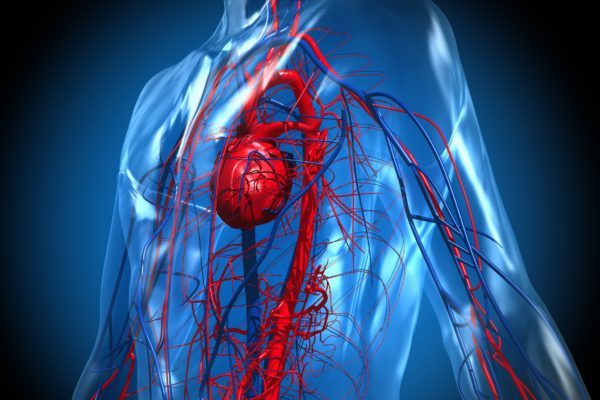
AA*MDS International Foundation (English)
Aplastic anemia (AA) is a rare condition that occurs when your body stops producing enough new blood cells. In AA the bone marrow and the haematopoietic stem cells that reside there are damaged. This causes a deficiency of all three blood cell types (pancytopenia): red blood cells (anaemia), white blood cells (leukopenia), and platelets (thrombocytopenia). Aplastic refers to the inability of stem cells to generate mature blood cells.
Red blood cells are responsible for carrying oxygen throughout the body using a protein called haemoglobin. Haemoglobin is necessary for efficient oxygen transport and is also the reason blood looks red. Haemoglobin contains iron, which is necessary for haemoglobin to bind oxygen. Many cases of anaemia stem from an iron deficiency. These types of anaemia are easily treatable. However, aplastic anemia starts with a bone marrow problem and it is not caused by iron deficiency.
Aplastic anaemia can be moderate, severe or very severe. People with severe or very severe aplastic anaemia are at risk for life-threatening infections or bleeding. With prompt and proper care, most people who have aplastic anaemia can be successfully treated. The only cure for aplastic anaemia is a bone marrow transplant. Aplastic anaemia can strike at any age regardless of race or gender. It is diagnosed more often in children, young adults and older adults.
Another type of AA concerns Fanconi anaemia which is a genetic disorder. This condition was first mentioned in 1927 by the Swiss paediatrician Guido Fanconi in which he described a family with five children, including three brothers with congenital malformations and bone marrow failure.
Fanconi's anaemia is a rare, inherited disease that leads to aplastic anemia. Children born with it tend to be smaller than average and have birth defects, such as underdeveloped limbs. The disease is diagnosed with the help of blood tests.
People with Fanconi anaemia have a greater risk of developing cancer. About 10 percent of patients develop leukemia and adults are more likely to develop a solid tumor (especially in the mouth, tongue, throat or oesophagus). Female patients are at greater risk of developing tumors in the reproductive organs. The average life expectancy for people with Fanconi anaemia is 20 to 30 years. The most common causes of death associated with Fanconi anaemia are bone marrow failure, leukemia and the development of solid tumors.
Aplastic anaemia symptoms may vary and depend on which blood cell types are affected and how low the blood counts have fallen. In aplastic anaemia, the patient will have pancytopenia, resulting in a decrease of all the different types of cells found in our blood. In contrast, pure red cell aplasia is characterized by reduction in red cells only. Aplastic anaemia can progress slowly over weeks or months, or it may come on suddenly. The illness may be brief, or it may become chronic. Aplastic anaemia can be very severe and even fatal.
A low red blood cell count is called anaemia. Symptoms associated with low red blood cell counts are:
A low white blood cell count is called neutropenia and lowers the body’s ability to fight bacterial infections. Symptoms associated with a low white blood cell count are:
A low platelet count is called thrombocytopenia. Symptoms associated with a low platelet count are:
If platelet counts are not too low, there may be no obvious symptoms. In rare cases, the number of platelets can get so low that dangerous internal bleeding occurs. Bleeding that will not stop is a medical emergency.
In the majority of patients, aplastic anaemia is acquired during life. It develops when damage occurs to the bone marrow, slowing or shutting down the production of new blood cells. Bone marrow produces stem cells, which give rise to other cells such as red blood cells, white blood cells and blood platelets. In aplastic anaemia, the bone marrow is described in medical terms as empty (aplastic) or that it contains very few blood cells (hypoplastic).
Factors that can temporarily or permanently injure bone marrow and affect blood cell production include:
In many cases, doctors aren’t able to identify the cause of aplastic anemia. This is called idiopathic aplastic anaemia.
The diagnosis can only be confirmed through bone marrow examination. In aplastic anaemia, the patient has pancytopenia resulting in decrease of all formed elements. In contrast, pure red cell aplasia is characterized by reduction in red cells only. Other tests help to confirm the diagnosis, look for its cause and find out how severe it is. They are also used to rule out other conditions that may cause similar symptoms.
Before this procedure is undertaken, a patient will generally have had other blood tests to find diagnostic clues, including a
The following tests aid in determining differential diagnosis for aplastic anaemia:
Aplastic anaemia can be mistaken for a condition called myelodysplastic syndrome (MDS). In MDS the bone marrow produces new, but deformed and underdeveloped blood cells. The bone marrow is sometimes called hyperplastic, meaning that it’s packed with blood cells. But some MDS patients have empty marrow making it difficult to distinguish from aplastic anaemia.
Some people with aplastic anaemia also have a rare disorder known as paroxysmal nocturnal haemoglobinuria. This disorder causes red blood cells to break down too soon. Paroxysmal nocturnal haemoglobinuria can lead to aplastic anaemia, or aplastic anaemia can evolve into paroxysmal nocturnal haemoglobinuria.
Aplastic anaemia treatments focus on increasing the number of healthy blood cells. When these counts go up, fewer symptoms will be experienced which require less treatment.
Treatment depends on the severity of the condition. Mild forms of aplastic anaemia may include observations and not need any treatment as long as the condition does not get worse. Moderate and acute cases may require blood and platelet transfusions. Bone marrow transplants, in which stem cells are replaced, can be used to treat severe cases. The treatment works best in people under 40 years who have sibling donors. Severe aplastic anaemia, in which the blood cell counts are extremely low, is life-threatening and requires immediate hospitalization for treatment.
Aplastic anaemia treatments may include:






